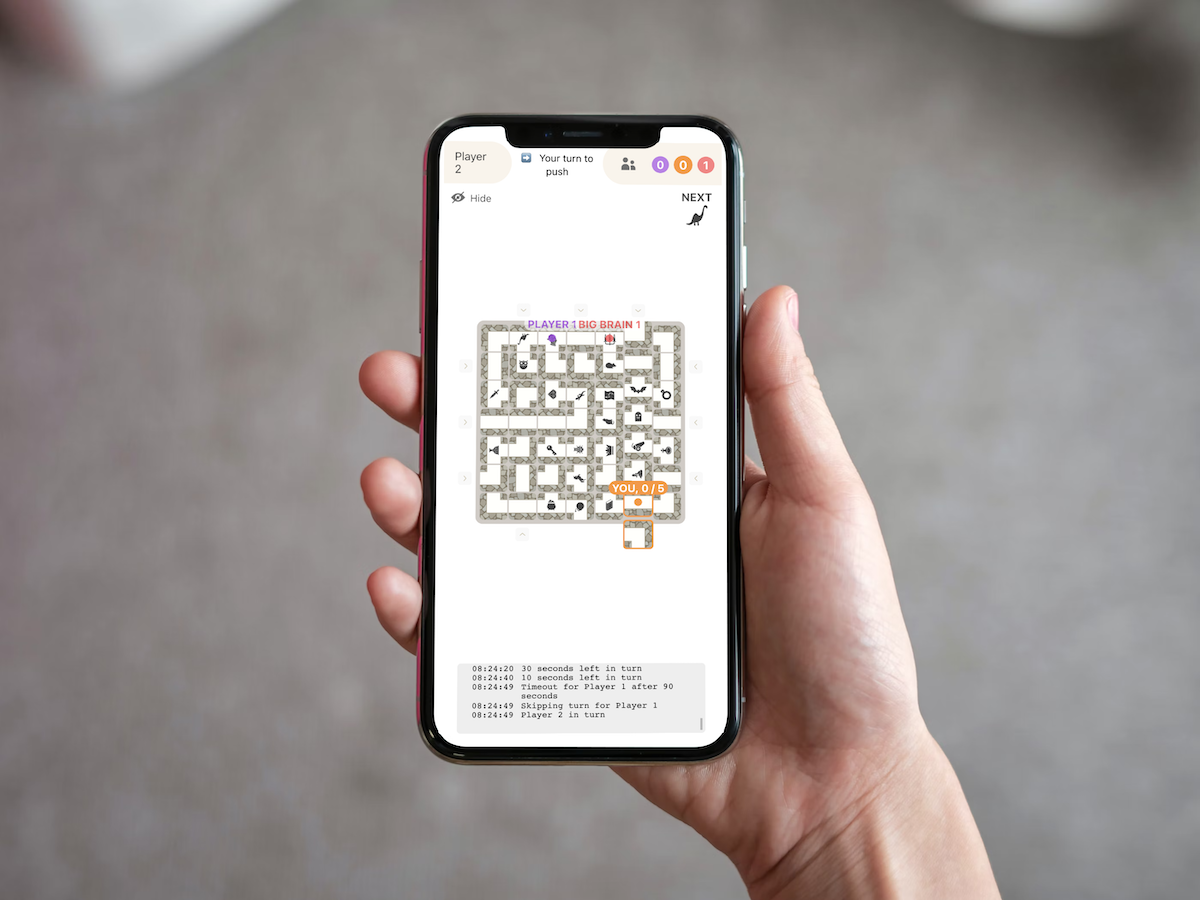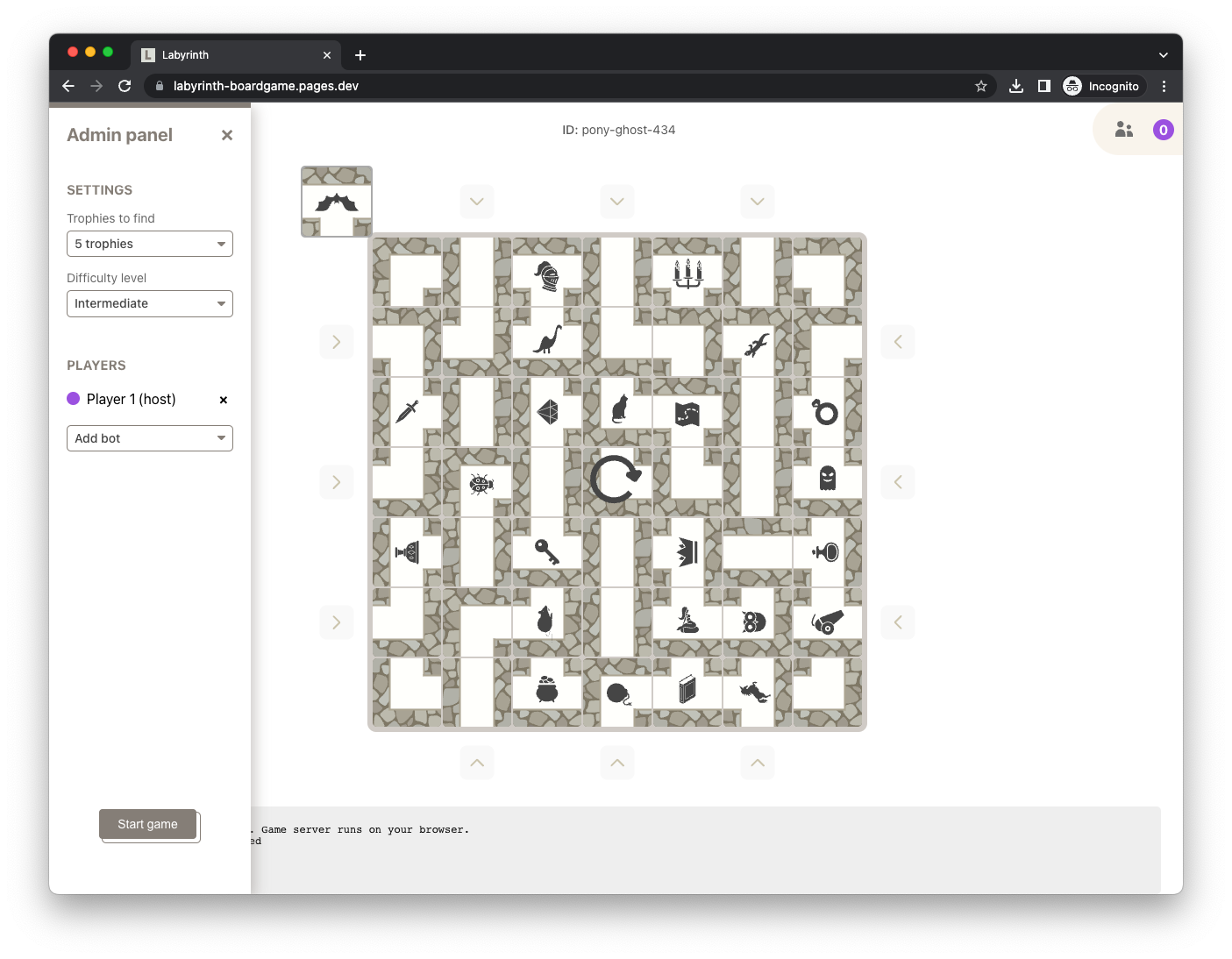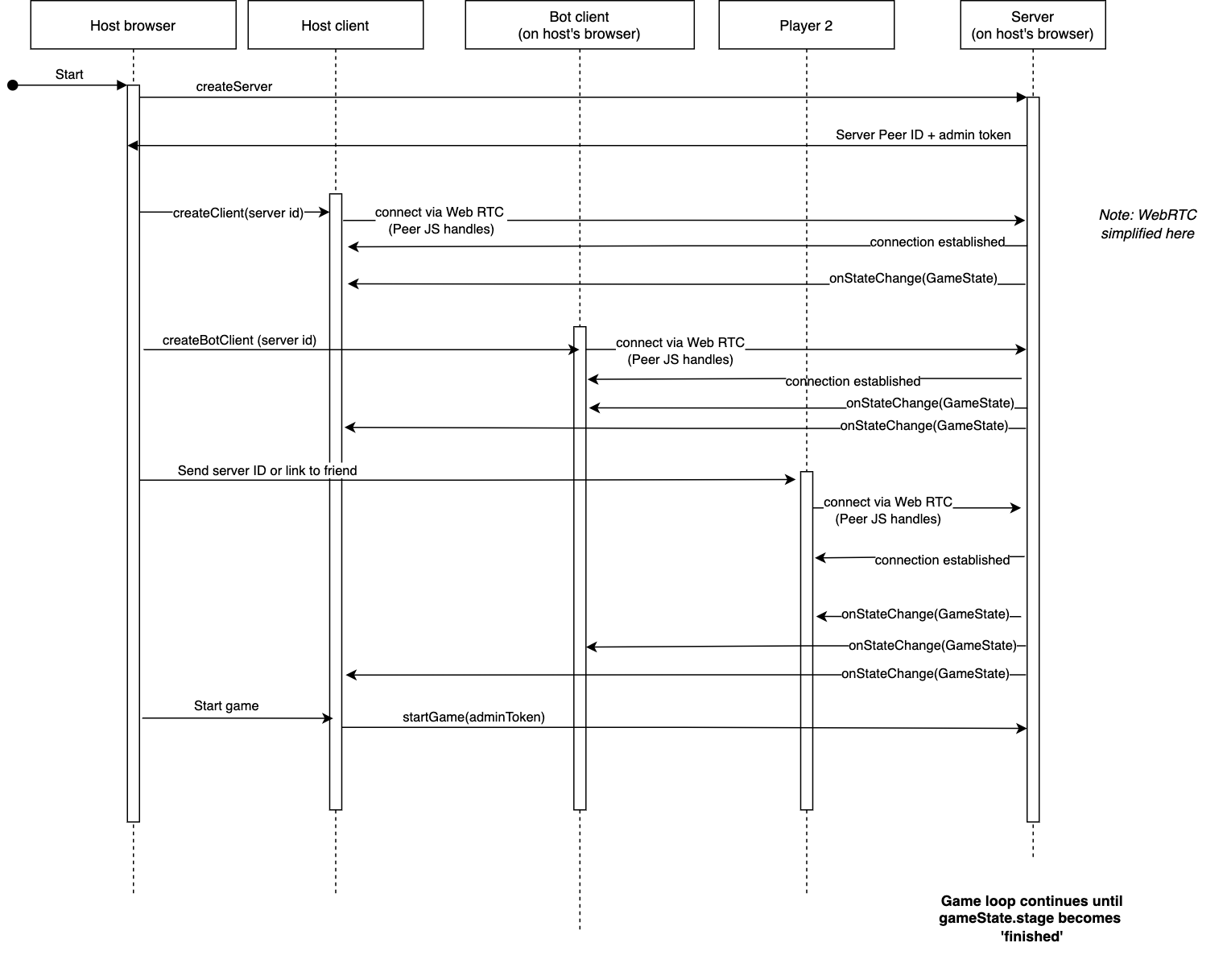Online version of the Labyrinth board game. The game server runs on the host's browser and networking happens peer-to-peer via WebRTC.
Play at: https://labyrinth-boardgame.pages.dev/
demo-game-move.mov
Note: the game might be very slow on mobile, as it might fallback to a public TURN server. Workaround is to use e.g. a Wifi network.
Optimized for Chrome and iOS Safari. Uses React for the UI. Clean React code was not the goal..
npm inpm start- Open http://localhost:4000 and click "Host game"
See the reference bot for all methods. Random bot is a minimal example of a working bot that moves randomly.
cp src/core/bots/example.ts cp src/core/bots/new.ts- Include the new bot in src/core/bots/availableBots.ts
- Set bot's name with
export const name ... - Implement
onMyTurnat minimum
Tips:
- You can remove yourself from the players and add two bots to spectate their super fast playing.
- You can automatically spectate and add two random bots like this: http://localhost:4000/?spectate=true&bots=random,random
&botDelay=100msquery parameter makes bots react faser
-
Game server: isolated piece which could be ran in dedicated-mode somewhere else. The server is controlled by the admin client via JSON RPC (transported via PeerJS WebRTC data connection) protocol. In practice, the browser which creates the server also runs the admin client.
Server code is split into:
- src/core/server/board.ts Game board utility functions.
- src/core/server/game.ts Game logic. Synchronous code.
- src/core/server/server.ts Runs networking and connects it to the core game logic. Asynchronous code.
-
Game client: client for the server. Each client equals one player in the server. Bots are also ran on the host's browser. In the worst scenario, the host is running: the server, admin client (Player 1), bot 1, bot 2, and bot 3 clients.
-
Server is the central controller
-
Server broadcasts state continuously to all clients on state changes
-
PeerJS is used for WebRTC data connection abstraction. Handles signaling for you.
Reconnecting was painful. Opted for a quite forceful object recycle/dispose pattern.
-
mole-rpc for JSON RPC communication between the game server and clients (two-way communication).
Mole-RPC is transport agnostic and it was fairly simple to create custom transporters for PeerJS communication.
-
Some messages are multiplexed by the server to all clients. For example the hover position of extra piece is not a server state, but purely a client state.
What happens when the game is created. Some aspects are simplified.
Board
- Knight Helmet by zidney from NounProject.com
- Three Candle by Designs by MB from NounProject.com
- Mouse by Mr Balind from NounProject.com
- Spider by Kiran Shastry from NounProject.com
- Unicorn by Bakunetsu Kaito from NounProject.com
- Dagger by Bonegolem from NounProject.com
- Diamond by Rank Sol from NounProject.com
- Bat by BackFake from NounProject.com
- Treasure by Baboon designs from NounProject.com
- Ghost by Lero Keller from NounProject.com
- Ring by Ayub Irawan from NounProject.com
- Cat by Iris Li from NounProject.com
- Mermaid by Lars Meiertoberens from NounProject.com
- Holy Grail by Lars Meiertoberens from NounProject.com
- Dinosaur by TiRo from NounProject.com
- Key by Alice Design from NounProject.com
- Treasure Map by Muhammad Miftakhul Rizky from NounProject.com
- Cannon by sandra from NounProject.com
- Crown by Pundimon from NounProject.com
- Potion by Desti Silvana Ekasari from NounProject.com
- Owl by DinosoftLab from NounProject.com
- Lizard by Vectorstall from NounProject.com
- Book by Juan Pablo Bravo from NounProject.com
- Bug by SBTS from NounProject.com
- Bomb by NOVITA ASTRI from NounProject.com
UI
- Caret by olcay kurtulus from NounProject.com
- Settings by i cons from NounProject.com
- Play Icon by sureya from NounProject.com
- Player by nico bayu saputro from NounProject.com
- Replay by Cuputo from NounProject.com
- Cross by Joni Ramadhan from NounProject.com
- Visible by Bluetip Design from NounProject.com
- Invisible by Bluetip Design from NounProject.com


